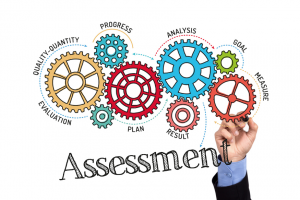
Rescinding job offers are on the rise, according to CNBC. Currently, the labor market remains strong with a low unemployment rate. So, why are leaders revoking or rescinding job offers, which was unheard of six months ago?
Answer: The economy is changing rapidly, some companies are growing too quickly, investors are becoming more cautious, and customers need to change how they conduct business. So unfortunately, in many cases, leaders freeze hiring and rescind job offers.
However, many rescind job offers due to finding false or embellished information the job candidate has provided.
But what is often overlooked are hiring managers rescinding job offers due to:
- intuitive or instinctive selection practices
- failure to conduct full due diligence
- not collecting enough good, reliable, and objective information
Preventive Measures to Avoid Rescinding Job Offers
It starts with improving the hiring and selection practices for new hires, rehires, job transfers, or promotions.
- Take the time to plan. Instead of hiring based on knee-jerk reactions whenever a client needs something new or tasks are not done, slow down. Review current employee skill-sets (See #2 below) and plan for known business changes. Then, reassign job duties to meet changing business needs based on job fit and skill-set.
- Use assessments and skills testing. Selecting someone for the job based on intuition overlooks good, reliable, and objective information required for making good selection decisions. Use objective job fit assessments and job match patterns to determine fit with the job responsibilities. Use skill testing to determine level and ability to use the skills. This goes beyond “certifications” and “education degrees.” This reduces unnecessary job offers, while promoting job satisfaction.
- Use qualified core value assessments. Honesty/integrity assessments for new hires and rehires provide direct admission data. While background checks may help you learn what a candidate has done in the past, core value assessments can predict what they might do in the future. Another great way to avoid rescinding job offers based on faulty information.
- Conduct critical due diligence. Thorough due diligence includes background, credit, education, social security, and professional licensing checks (where appropriate). This needs to be done before (or as soon as legally possible) the interview process is started. If the applicant doesn’t meet specific criteria, don’t interview them! This reduces time, money, and the need to rescind job offers.
- Conduct reference checks and employment verifications. Over 85% of resumes today embellish the truth or contain lies. It’s pay now or pay later. Contact past employers to verify employment, job title, and actual dates worked. Also, talk with professional references to ensure the person interviewed is the same person they worked with. Conduct these before making the job offer!
- Have at least three final job candidates. Many hiring managers hang on too long when a job candidate isn’t working out for fear of wasting time, money, and energy. When a candidate waits too long to accept the job offer, has unreasonable requirements, or hasn’t been truthful, let them go! With three final candidates, there are others ready. It reduces “buyer’s remorse” for the hiring manager.
- Be cautious. Reconsider rescinding a job offer if it can be attributed to discrimination based on disability, race, age, gender, religion, or national origin. Facing a lawsuit can be expensive (losing customers, social media bashing, etc.).
- Seek other opportunities for the displaced person. If the job offer is rescinded, consider what can be done if the newly hired person has been relocated or recruited from a previous job. Review the workload, client demands, and upcoming employee changes (medical leaves). What other work can the person do while s/he seeks other employment? Contractual or short-term? Positive employee relations go a long way!
- Share only one factual reason why. If the job offer is rescinded and the candidate wants to know why, simply answer the question. Example, “When we conducted an employment verification, the company did not have you listed. Do you have a copy of two or more paychecks and other documentation?” This is not the time to coach the person.
- Handle unprofessional behavior immediately. Consider rescinding the job offer to avoid hiring a problematic person and causing team and customer dissatisfaction:
- negative comments posted about the company, employees, or products
- still looking for a better job after the job offer has been made
- wanting to negotiate better pay or benefits after the job offer has been accepted
Three Key Overlooked Factors
- Keep fingers on the company’s finances. Know employment costs and the cost of hiring mistakes. On average, it costs companies 35% of salaries (or hourly wages) for benefits and perks (Salary x .35 = Costs). When calculating costs, don’t forget to include tangible costs (training, administrative) and intangible costs (company reputation, loss of customers). This knowledge encourages hiring bosses to make better business and selection decisions.
- Factor in executive changes. When new executives are brought in, wait before hiring new people. Too often, there are people the executive wants to hire, which may cause the company to rescind job offers. And, with a new executive, there may be changes in company direction and the skills required. This waiting period will avoid the need to rescind job offers.
- Changes in contract or project plans. Stay in communication with clients to prevent surprises. This prevents the need to rescind job offers or make team cut-backs.
©Jeannette Seibly 2022 All Rights Reserved
 Jeannette Seibly is The Leadership Results Coach. She has been an award-winning international executive and family business management consultant, keynote speaker, and author for over 29 years. Her focus is to guide leaders to make a positive difference. Feel stuck moving your team forward? Want straightforward counsel on how to do it? Let’s chat! Contact Jeannette for a confidential conversation.
Jeannette Seibly is The Leadership Results Coach. She has been an award-winning international executive and family business management consultant, keynote speaker, and author for over 29 years. Her focus is to guide leaders to make a positive difference. Feel stuck moving your team forward? Want straightforward counsel on how to do it? Let’s chat! Contact Jeannette for a confidential conversation.
A note from Jeannette about preventing the need to rescind job offers: while business is rapidly changing, so is the need to update hiring and selection practices. Unfortunately, one not-so-good growing practice is rescinding job offers. This leaves job candidates perplexed and often unemployed if the person left a job to accept the job offer. What should leaders do to avoid the need to rescind job offers? What can an up-to-date strategic selection system provide in reducing costs and improving job fit? Need to talk about how to improve your hiring and selection systems? Let’s chat now!
Coming soon! Hire Amazing Employees (Revised Edition): How to Increase Retention, Revenues and Results!


 Jeannette Seibly is The Leadership Results Coach. She has been an award-winning international executive and family business management consultant, keynote speaker, and author for over 29 years. Her focus is to guide leaders to make a positive difference. Feel stuck moving your team forward? Want straightforward counsel on how to do it? Let’s chat!
Jeannette Seibly is The Leadership Results Coach. She has been an award-winning international executive and family business management consultant, keynote speaker, and author for over 29 years. Her focus is to guide leaders to make a positive difference. Feel stuck moving your team forward? Want straightforward counsel on how to do it? Let’s chat! 
 Jeannette Seibly is The Leadership Results Coach. She is an award-winning international executive and family business management consultant, keynote speaker, and author for over 29 years. Her focus is to guide leaders to make a positive difference. Feel stuck moving your team forward? Want straightforward counsel on how to do it? Let’s chat!
Jeannette Seibly is The Leadership Results Coach. She is an award-winning international executive and family business management consultant, keynote speaker, and author for over 29 years. Her focus is to guide leaders to make a positive difference. Feel stuck moving your team forward? Want straightforward counsel on how to do it? Let’s chat! 





